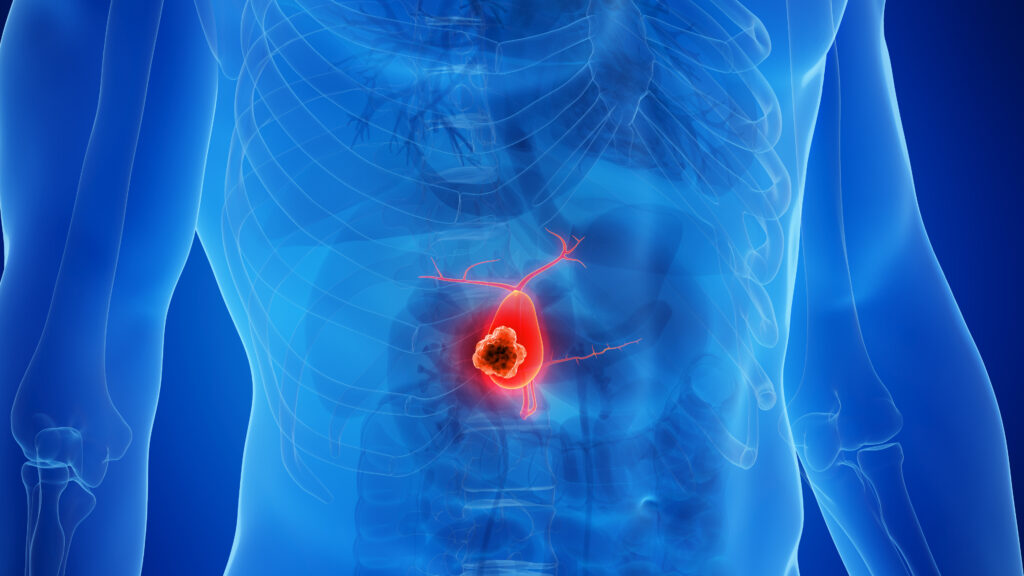Gallbladder cancer is a rare but serious health concern. Particularly in India, it affects more individuals than in many other countries, making its awareness critical. Your gallbladder is a small organ under the liver that helps in digestion. The rarity and potential severity of gall bladder cancer make it essential to understand its symptoms, causes, and treatment.
Awareness is key; when detected early, treatment can be more effective. Many myths surround gall bladder cancer, and debunking these is vital for encouraging regular check-ups. Regular screenings can help catch potentially harmful conditions before they develop further.
Understanding Gallbladder Cancer
Gall bladder cancer involves unusual cell growth in the gallbladder. This organ is small and pear-shaped, storing bile, a digestive fluid produced by the liver. The gallbladder helps with digesting fats. Despite being small, it plays a crucial part in the digestive system’s function.
The Silent Signs: Symptoms of Gallbladder Cancer
In the early stages, gall bladder cancer symptoms may not be apparent. This is why it is often discovered accidentally or in later stages. In advanced cases, there are clearer signs to watch for, such as persistent pain in the upper belly region. Other signs of advanced gall bladder cancer can include unexpected weight loss and yellowing of the skin, known as jaundice. Jaundice indicates bile duct blockage or liver issues. Also, discover if constant tiredness or fever occurs. Sometimes, visible lumps can be felt if the gallbladder swells. These symptoms call for immediate medical attention.
Decoding the Causes and Risk Factors
Genetics, the environment, and lifestyle play a role in risk factors for gall bladder cancer. Being female or over 60 increases risk, as does being overweight. Untreated gallstones also pose a threat. To lower risk, make lifestyle changes. This includes eating a balanced diet full of fruits and vegetables. Regular exercise and avoiding smoking or excessive drinking will help too. In areas with a higher prevalence of gall bladder cancer, it’s essential to stay informed.
Path to Diagnosis: Navigating Gallbladder Cancer
Diagnosing gall bladder cancer can be tricky due to its hidden location in the body. Early detection is hard, but regular check-ups are crucial. Doctors use various methods to identify gall bladder cancer, including imaging tests like ultrasounds or CT scans. Blood tests can also indicate issues. Consulting a doctor about any unusual symptoms or changes in health is important, as it helps in timely diagnosis.
Exploring Treatment Options
Surgery and Its Role in Treatment
Surgery is often a primary method for gall bladder cancer treatment options. The surgery usually involves removing the gallbladder, known as cholecystectomy. Sometimes this involves removing nearby tissues, too, if cancer has spread. Surgery can help reduce the spread of cancer and may offer a possibility for recovery.
Supplementary Treatments
Radiation therapy is another avenue for gall bladder cancer treatment options. It uses high-energy rays to destroy cancer cells. It can be used either before or after surgery to enhance effectiveness. Radiation is often paired with chemotherapy, which fights cancer cells using drugs. Chemotherapy can stop cancer from spreading.
Targeted therapy is a newer approach. It attacks specific cancer cells without damaging normal ones, making it precise in treatment. Immunotherapy is another innovative method that boosts the body’s defenses to fight cancer more effectively. Combining these methods can sometimes lead to better treatment outcomes.
Gallbladder Cancer Prognosis
The outlook, or gall bladder cancer prognosis, varies based on the cancer’s stage. Early detection generally means a better prognosis. If cancer is contained in the gallbladder, treatment success is higher. However, if it has spread beyond the gallbladder, the prognosis is less favorable. Regular screenings and consultations can make a significant difference in outcomes.
Follow-Up and the Journey to Recovery
Following treatment, routine follow-ups are crucial. They help monitor recovery and spot any developing issues early. Gall bladder cancer survivors will need to manage and mitigate treatment side effects. Adjustments to lifestyle and diet can also aid recovery and overall health.
Conclusion: Taking Action for Healthier Lives
In closing, gall bladder cancer awareness is essential. Knowing its symptoms, risk factors, and treatment options is the first step in combating it. Regular medical check-ups can save lives by catching cancer early. Be proactive about health management. Encourage family and friends to stay informed and consult a doctor if any symptoms arise. Every step taken toward better health can make a big difference in quality of life.
